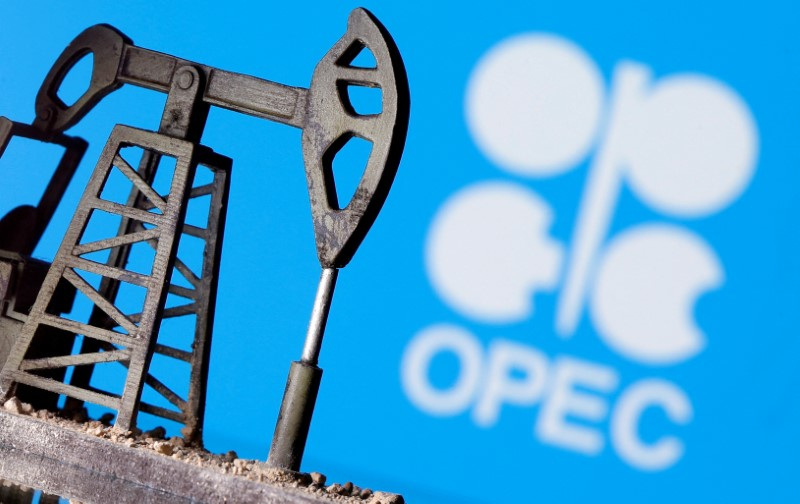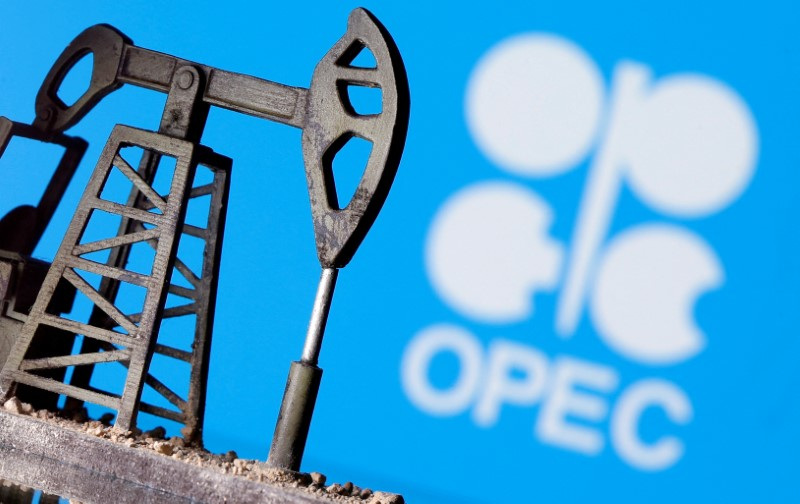Commodities
Analysis-Global oil demand needs to rise faster to absorb OPEC+ hike

By Alex Lawler, Dmitry Zhdannikov and Shariq Khan
LONDON (Reuters) – Global oil demand growth needs to accelerate in coming months or the market will struggle to absorb an increase in oil supply that OPEC+ is planning to make from October, according to data, analysts and industry sources.
Oil demand growth in the first seven months of the year from top consumers the United States and China had failed to meet some expectations even before renewed fears of a U.S. recession triggered a global stock and bond sell-off this week.
If the economy slows further, oil demand growth will likely slow with it. That will mean OPEC+ would either have to delay plans to pump more oil or accept lower prices for higher supply, analysts said.
“In current circumstances of significant risk of recession, it is unlikely OPEC+ would move forward with the planned October increases,” said Gary Ross, CEO of Black Gold Investors and a veteran OPEC-watcher.
The price of oil has fallen below $80 per barrel in August – less than most members of OPEC+, or the Organization of the Petroleum Exporting Countries and allies such as Russia, need to balance their budgets.
“Oil demand definitely has a downside risk,” said Neil Atkinson, an independent analyst who previously worked at the International Energy Agency, citing concern about Chinese and U.S. economies.
“It’s very difficult to see how prices can rise significantly if demand is slower than we thought” he said, adding that he expected OPEC+ to hit pause on its output increase.
For the first seven months of 2024, China’s crude imports totalled 10.89 million barrels per day, down 2.4% on the year, official data showed on Wednesday.
China’s slumping consumption of diesel, as use of LNG-powered trucks grows, is weighing on domestic fuel demand, as is a sluggish economy hobbled by a prolonged crisis in the property sector.
In the United States, oil consumption through July has risen by 220,000 bpd on the year to average 20.25 million bpd, according to Reuters calculations based on government estimates. Demand will need to accelerate to reach the government’s 2024 forecast of 20.5 million bpd.
Whether or not global demand hits the heights needed to absorb additional supplies this year is difficult to gauge because of a record variation in where the world’s most respected oil demand analysts at OPEC and the IEA measure demand to date.
There is a time lag on oil consumption data, and preliminary figures are often revised. That leaves forecasters including best estimates in some of their demand figures.
OPEC pegs global demand growth at 2.15 million bpd in the first half of 2024, while the IEA estimates it was 735,000 bpd. The IEA advises industrialised countries on energy policy.
OPEC’s estimate of first-half demand growth is little changed from what it was at the start of the year. The IEA has cut its estimate of first-half demand growth from 1.19 million bpd forecast in January.
The IEA estimated China’s consumption contracted in the second quarter, while OPEC estimates it rose by over 800,000 bpd. China is one of the main reasons for the difference in outlooks for the full year, as well as for the first half.
Global growth would need to accelerate a little in the second half if OPEC estimates on first-half demand were correct. But if the IEA is right, demand would need to accelerate rapidly.
The second half is typically the period of highest consumption as the simple fact of global economic growth increases oil demand and because it includes the peak driving season, Northern Hemisphere harvest and purchases to prepare for winter.
For demand growth to hit OPEC’s full-year prediction, it would need to accelerate to an average of 2.30 million bpd in the second half, according to Reuters calculations. Demand needs to grow by 1.22 million bpd in the second half to reach the IEA’s full-year prediction.
OPEC and the IEA are scheduled to update their demand forecasts next week.
OPEC+ SUPPLY INCREASE
OPEC+ last week confirmed its plan to start raising production from October with the caveat that it could be paused or reversed if needed.
The increase is predicated on demand hitting OPEC’s forecast, which would increase the need for oil from the producer group and its allies. OPEC+ pumps more than 40% of the world’ s crude.
Should OPEC’s demand prediction be realised, the demand for crude from OPEC+ countries is forecast to reach 43.9 million bpd in the fourth quarter, up from production of 40.8 million bpd in June, in theory allowing room for extra output.
OPEC+ still has a month to decide whether to start releasing the oil from October, and the group will study oil market data in the coming weeks, a source close to the group said.
Saudi Aramco CEO Amin Nasser said on Tuesday he expected growth of between 1.6 million and 2 million bpd in the second half of the year.
Two OPEC sources said it was unclear if demand was rising as rapidly as needed to meet OPEC’s third-quarter forecast. OPEC did not respond to a request for comment.
U.S. DEMAND NOT CLEAR
The IEA says that slower economic growth and a shift towards electric vehicles in China has changed the paradigm for the world’s second-largest economy, which for years has driven global rises in oil consumption. OPEC sees strong growth persisting.
Early indications of China’s August crude imports, such as from data intelligence firm Kpler, point to a small rebound from July. Two traders dealing in China’s purchases of West African crude said demand for August- loading oil had been soft.
Global jet demand is expected this year to surpass 2019 levels, according to the International Air Transport Association, although IATA said in June that international travel in Asia remained subdued especially in China.
“The big levers everyone pointed to for demand growth were jet demand and China,” said a source with an oil trading company. “Chinese demand hasn’t been great and jet demand is decent in Europe but has not fully recovered (from the pandemic).”

In top oil consumer the United States, gasoline demand has proven hard to gauge: revisions to official data last week showed May demand at the highest level since August 2019. Earlier estimates and independent trackers pegged demand below last year.
Dour economic data from the United States could also spell trouble for oil markets, especially for diesel. U.S. diesel demand was about 4% lower in the first five months of this year than in 2023, according to EIA data.
Commodities
Oil prices rise; U.S. crude inventories plunge, Russia-Ukraine truce eyed
Commodities
India’s Reliance to stop buying Venezuelan oil over US tariffs, sources say
Commodities
Oil prices climb on Venezuela supply worries

 Forex3 years ago
Forex3 years agoForex Today: the dollar is gaining strength amid gloomy sentiment at the start of the Fed’s week

 Forex3 years ago
Forex3 years agoUnbiased review of Pocket Option broker

 Forex3 years ago
Forex3 years agoDollar to pound sterling exchange rate today: Pound plummeted to its lowest since 1985

 Forex3 years ago
Forex3 years agoHow is the Australian dollar doing today?

 Cryptocurrency3 years ago
Cryptocurrency3 years agoWhat happened in the crypto market – current events today

 World3 years ago
World3 years agoWhy are modern video games an art form?

 Commodities3 years ago
Commodities3 years agoCopper continues to fall in price on expectations of lower demand in China

 Economy3 years ago
Economy3 years agoCrude oil tankers double in price due to EU anti-Russian sanctions



























